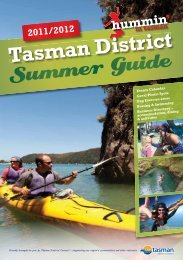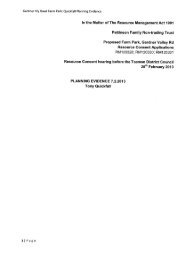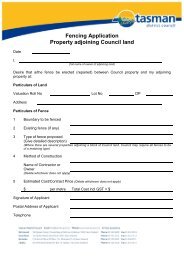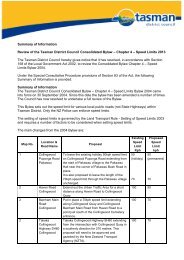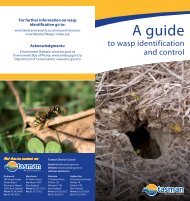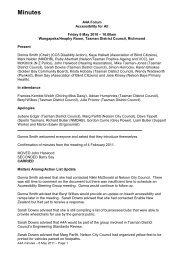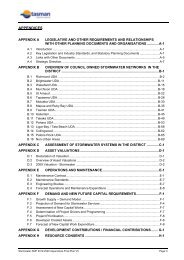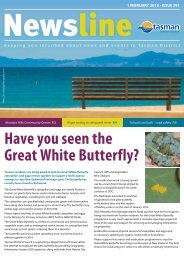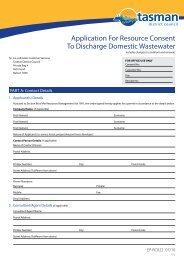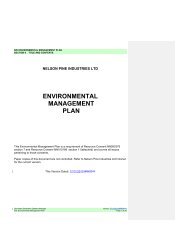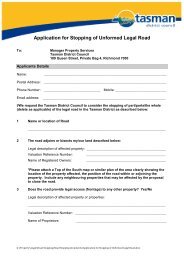Abel Tasman Foreshore Scenic Reserve Draft Management Plan
Abel Tasman Foreshore Scenic Reserve Draft Management Plan
Abel Tasman Foreshore Scenic Reserve Draft Management Plan
Create successful ePaper yourself
Turn your PDF publications into a flip-book with our unique Google optimized e-Paper software.
2. Seek approval from the Minister of Conservation for the use of biological<br />
control organisms to control pests, where it is in accordance with the<br />
<strong>Reserve</strong>s Act 1977, Conservation General Policy 2005 and this plan.<br />
3. Carry out animal and plant pest control or eradication operations consistent<br />
with priorities identified in <strong>Tasman</strong> District Council’s regional pest<br />
management strategy and the Department of Conservation’s priorities for<br />
pest control.<br />
4. Use whatever method or combination of methods necessary for animal and<br />
plant pest control to maintain ecosystem health.<br />
5. Prevent the establishment of new populations of plant and animal pests<br />
through continued surveillance and the timely removal of any individuals or<br />
groups that are found outside their established range.<br />
6. Encourage the public to assist in pest surveillance and control, and provide<br />
information to the public about preventing the introduction of new pests.<br />
7. Work with the Top of the South Marine Biosecurity Partnership to prevent the<br />
introduction, and minimise the spread, of damaging marine species.<br />
8. Monitor the reserve and adjoining coastal waters for risks to biosecurity and<br />
take immediate action to remove any new foreign organism.<br />
3.3 Fire management<br />
Fire is a major threat to estuary margins within and adjoining the reserve, causing<br />
the destruction of indigenous plants and animals and the creation of habitats<br />
vulnerable to invasion by plant pests. Fire can also pose a significant threat to areas<br />
adjacent to the reserve, both the <strong>Abel</strong> <strong>Tasman</strong> National Park and the private land. As<br />
the <strong>Abel</strong> <strong>Tasman</strong> coast can become very dry and carry a very high fire risk at certain<br />
times, fire bans are often imposed.<br />
Lighting fires on the foreshore, such as driftwood fires, does occur. Fires are<br />
currently allowed on the foreshore under the existing bylaws (see Appendix 5),<br />
subject to a number of conditions including a requirement for a permit from the<br />
Waimea Rural Fire Authority 5 . Such permits should not be issued except where the<br />
Administration Committee considers that a fire is necessary for the management of<br />
the reserve or the adjoining national park. The Administration Committee proposes<br />
that the bylaws be amended to give effect to this restriction.<br />
The Administration Committee intends to do all it can to minimise any risks from<br />
fires on the reserve through enforcement of the bylaws, education, advocacy, facility<br />
and visitor management and fire bans. The Waimea Rural Fire Authority sets general<br />
management policies for dealing with fires when they occur through the preparation<br />
of an annual Fire <strong>Plan</strong>.<br />
3.3 Policies<br />
1. To protect the values of the reserve from fire.<br />
2. To minimise risks from fires on the reserve.<br />
5 In the case of the foreshore reserve a permit application should be made to the Department of<br />
Conservation’s Golden Bay (Takaka) or Motueka Area Offices.<br />
3. Conservation of natural resources 27



